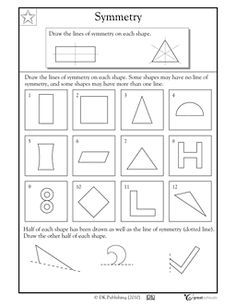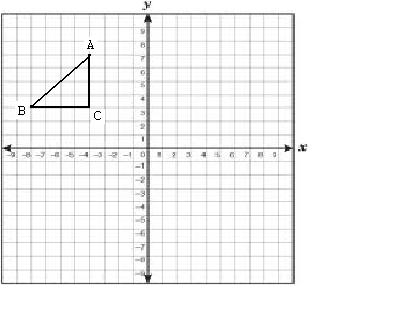Axis of Symmetry Worksheet
The axis of symmetry worksheet is a helpful resource for students learning about mathematical symmetry and graphing parabolas. This worksheet is designed to assist learners in understanding the concept of the axis of symmetry and determining its equation. Whether you are a middle school student exploring symmetry for the first time or a high school student studying quadratic functions, this worksheet can provide valuable practice and reinforcement.
Table of Images 👆
More Other Worksheets
Kindergarten Worksheet My RoomSpanish Verb Worksheets
Cooking Vocabulary Worksheet
DNA Code Worksheet
Meiosis Worksheet Answer Key
Art Handouts and Worksheets
7 Elements of Art Worksheets
All Amendment Worksheet
Symmetry Art Worksheets
Daily Meal Planning Worksheet
What is an axis of symmetry?
An axis of symmetry is a theoretical line that divides a shape or object into two equal halves, where each half is a mirror image of the other. This line represents the balance and symmetry of the shape, with all points on one side having a corresponding point on the other side at an equal distance from the axis.
How is the axis of symmetry related to a quadratic function?
The axis of symmetry of a quadratic function is a vertical line that divides the parabolic graph into two symmetric halves. It is always located at the x-coordinate of the vertex of the parabola, and can be found using the formula x = -b/2a, where the quadratic function is in the form f(x) = ax^2 + bx + c. Essentially, the axis of symmetry helps determine the symmetry and balance of the graph of a quadratic function.
How can you determine the axis of symmetry of a quadratic equation?
To determine the axis of symmetry of a quadratic equation in the form of ax^2 + bx + c, you can use the formula x = -b/2a. The axis of symmetry of the parabola formed by the quadratic equation is the vertical line passing through the vertex. By finding the x-value of the vertex using the formula x = -b/2a, you can determine the axis of symmetry.
What is the significance of the axis of symmetry in graphing quadratic functions?
The axis of symmetry in graphing quadratic functions is significant because it is the vertical line that divides the parabola into two symmetrical halves. It helps in determining key points on the parabola, such as the vertex, which is the point where the axis of symmetry intersects the parabola. Knowing the axis of symmetry allows us to easily find the mirror image of one side of the parabola on the other side, making it easier to graph and analyze quadratic functions.
Can a quadratic function have more than one axis of symmetry?
No, a quadratic function can only have one axis of symmetry. This axis of symmetry is a vertical line that passes through the vertex of the parabola, dividing it into two symmetrical halves. Any other line passing through the parabola will not produce symmetrical halves, making it the unique axis of symmetry for a quadratic function.
Is the axis of symmetry always a vertical or horizontal line?
The axis of symmetry is always a vertical line for functions that are symmetric across a vertical line, such as parabolas. For functions that are symmetric across a horizontal line, such as the equation y = c (a horizontal line), the axis of symmetry is a horizontal line.
How does changing the coefficients of a quadratic equation affect the axis of symmetry?
Changing the coefficients of a quadratic equation does not affect the axis of symmetry. The axis of symmetry of a quadratic equation, given by the formula x = -b/(2a), is solely determined by the coefficients of x^2 (a) and x (b) in the equation y = ax^2 + bx + c. Therefore, modifying the coefficient c has no impact on the location of the axis of symmetry.
Can you find the axis of symmetry without graphing the quadratic equation?
Yes, the axis of symmetry of a quadratic equation in the form of \(y = ax^2 + bx + c\) is calculated using the formula \(x = -\frac{b}{2a}\). For any given quadratic equation, you can find the axis of symmetry by plugging in the values of \(a\) and \(b\) from the equation into this formula without the need to graph it.
How does finding the axis of symmetry help in solving quadratic equations?
Finding the axis of symmetry in a quadratic equation is crucial because it allows us to identify the x-coordinate of the vertex of the parabola formed by the equation. Once we determine the axis of symmetry, we can substitute this value back into the original equation to find the corresponding y-coordinate of the vertex. This vertex represents the maximum or minimum point of the parabola, depending on whether the leading coefficient is positive or negative, respectively. By knowing the vertex, we can easily determine the roots of the quadratic equation by finding the x-intercepts where the parabola meets the x-axis.
What other properties are associated with the axis of symmetry in quadratic functions?
The axis of symmetry of a quadratic function is also the line that divides the parabola into two symmetric halves. This means that any point on one side of the axis of symmetry is a reflection of a corresponding point on the other side of the axis. Additionally, the axis of symmetry is where the vertex of the parabola is located, and it will have either a minimum or maximum value depending on the direction of the parabola.
Have something to share?
Who is Worksheeto?
At Worksheeto, we are committed to delivering an extensive and varied portfolio of superior quality worksheets, designed to address the educational demands of students, educators, and parents.




















Comments